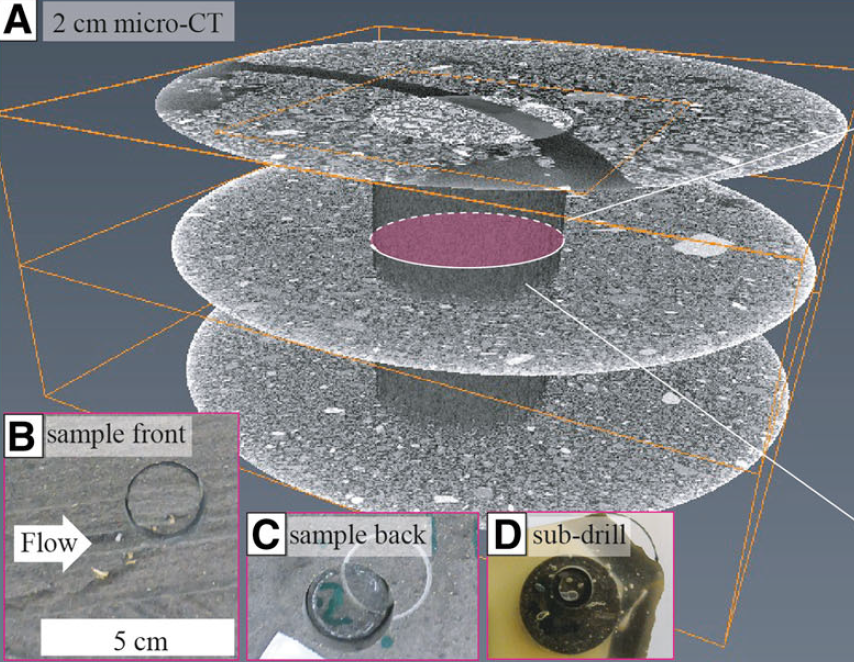Revisiting the lacquer peels method with pyroclastic deposits: sediment plates, a precise, fine scale imaging method and powerful outreach tool

Sediment plates (a type of lacquer peels) represent a sampling method whereby a thin plate of undisturbed sediments is obtained directly from the outcrop. A low-viscosity, hardening epoxy resin is applied to a freshly exposed cross-section of an unconsolidated deposit and impregnates a surface layer of the cross-section via capillary forces before solidifying. Upon hardening, a solid plate (0.5–5 cm thick and up to 2 m in length) of the sedimentary formation can be recovered and transported with full preservation of the initial organization of the particles. Sediment plates are capable of recording and highlighting details of stratification to a very fine scale and high degree of precision. This method represents a valuable tool for research, education, and exhibition purposes.